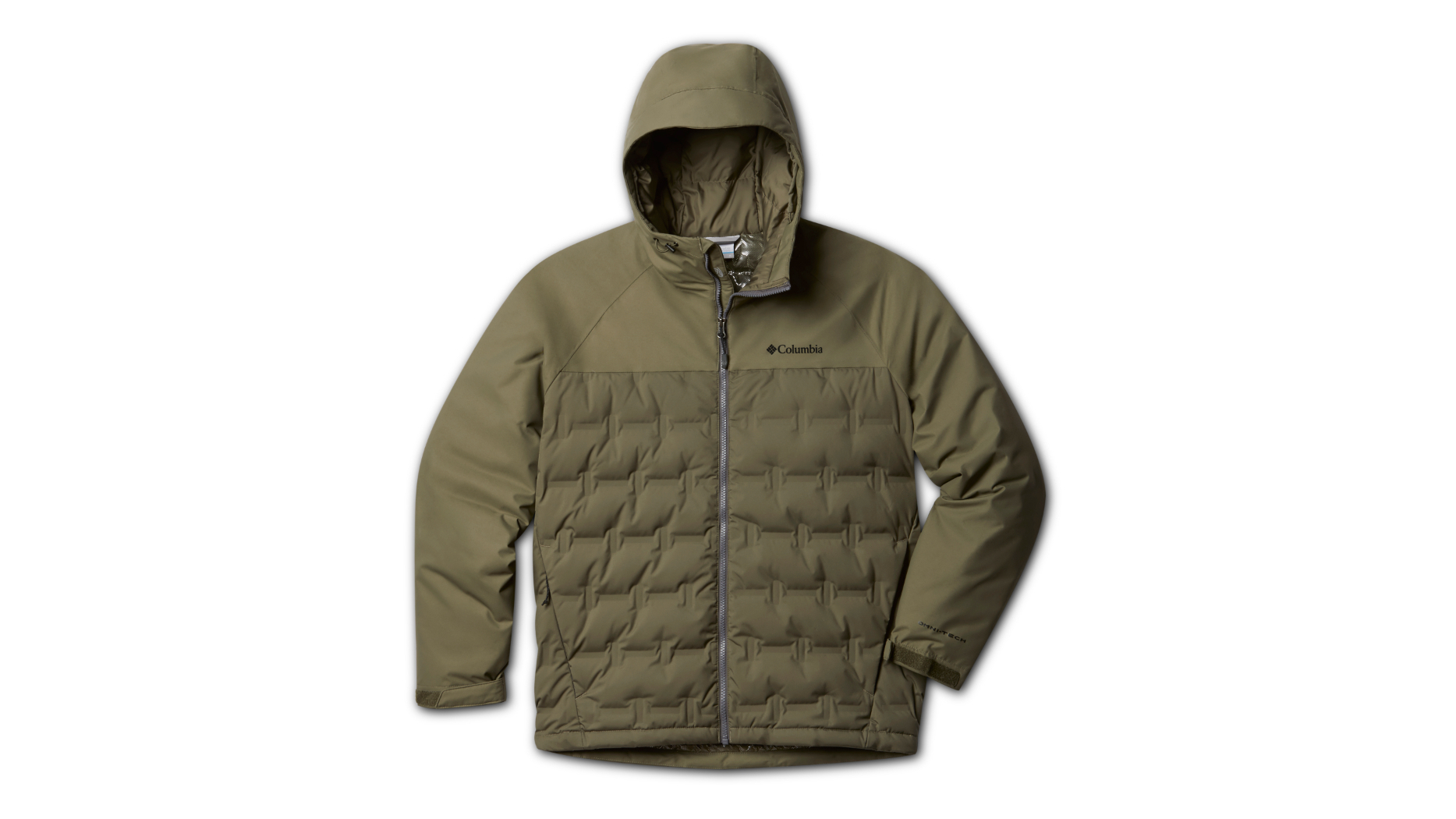Advnture Verdict
A super smart and very innovative technical garment, the Columbia Grand Trek down jacket has some ingenious design features that genuinely add to the performance levels of this versatile puffer jacket.
Pros
- +
Fully waterproof construction
- +
Stitch-free baffles minimise down loss
- +
Omni-Heat reflective lining enhances warmth
- +
Tough and durable face fabrics
Cons
- -
Stiff face fabric limits down loft, impacting overall warmth
- -
Not the warmest due to its 650 fill power and low fill weight
- -
Not particularly light or packable
You can trust Advnture
First impressions
American mega-brand Columbia has become known in recent years for its unusual waterproof down jackets. The Columbia Grand Trek down jacket is one such example, with a DWR-treated face fabric laminated to the brand’s own Omni-Tech waterproof membrane. It also features sealed seams at all critical points in order to guarantee full waterproof protection as well as to lock in heat. The outer fabric used for the main panels is polyester, with a tougher nylon dobby employed for the arms, shoulders and hood. This provides better durability and abrasion resistance, especially if wearing a pack. It all protects the 650-fill power down inside the jacket, which is certified by the Responsible Down Standard to ensure ethical sourcing. This is housed inside stitch-free welded baffles, which is a clever way to ensure a waterproof construction that also solves the perennial problem of down escaping through stitching holes. The inner lining of the jacket utilises Columbia’s patented Omni-Heat system, a pattern of metallic dots designed to reflect radiated body heat and therefore boost warmth.
RRP: £210 (UK)/$200 (US)/€230 (EU)
Fill: RDS-certified 650-fill-power down
Sizes (men's): S–XXL
Sizes (women's): XS–XL
Weight (men's size M): 706g/24.9oz
Colours: Stone Green/Black/Indigo/Velvet Cove/Nocturnal/Wild Iris
- What are the best down jackets and puffers you can buy? We've put them through their paces
- Wondering how to choose a down jacket? We can point you in the right direction
- Down vs synthetic fibre: which is best for you?
In the field
This jacket is packed with plenty of clever tech, and by and large, it works. In addition to those heat-retaining design features, you can also lock in more warmth by cinching in the hood’s face drawcords and Velcro rear volume adjustment, pulling in the hem drawcord, sticking your mitts in the two cosy zipped hand pockets and tightening up the Velcro-adjustable cuffs, which cinch in nicely over gloves.
So, that’s a tick for warmth. How about that waterproofing? Also mostly good, but we did note, after taking a drenching, that although the main zipper is PU-coated, it still isn’t particularly water-resistant, and we had a thin damp patch down the front of the layer we were wearing underneath – though at least the jacket’s small internal storm flap helps to block out wind and some of that moisture.
It’s a slight shame that the fit isn’t more refined, as some might find it a little boxy, though at least this allows room for layering. The fill power of the jacket is not as high as some, and the total fill weight of the jacket is not the most generous either. In addition, the stiffer face fabric seems to limit the ability of the down to loft inside the baffles, further impacting overall warmth. It also limits packability.
But as a jacket for hard outdoor use or everyday wear, we actually really liked the Grand Trek. It’s a layer that we found ourselves reaching for when going to grab firewood from the log store at home, as well as wearing in town and for countryside wanders – it proved a good option for morning dog walks, for example. That waterproof and durable construction gives a reassurance if you’re out in wet weather or working in tough conditions that you just don’t get with other down jackets.
An outdoors writer and editor, Matt Jones has been testing kit in the field for nearly a decade. Having worked for both the Ramblers and the Scouts, he knows one or two things about walking and camping, and loves all things adventure, particularly long-distance backpacking, wild camping and climbing mountains – especially in Wales. He’s based in Snowdonia and last year thru-hiked the Cambrian Way, which runs for 298 miles from Cardiff to Conwy, with a total ascent of 73,700 feet – that’s nearly 2½ times the height of Everest. Follow Matt on Instagram and Twitter.


